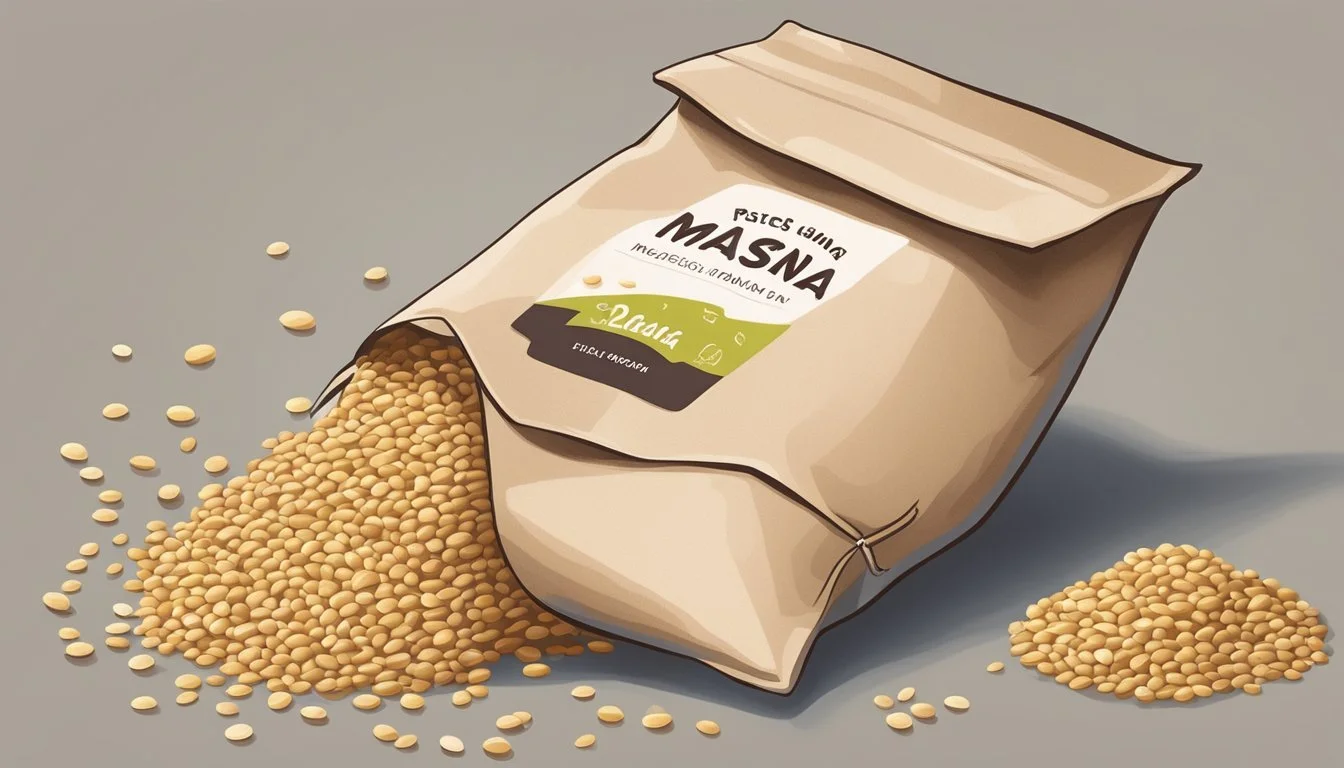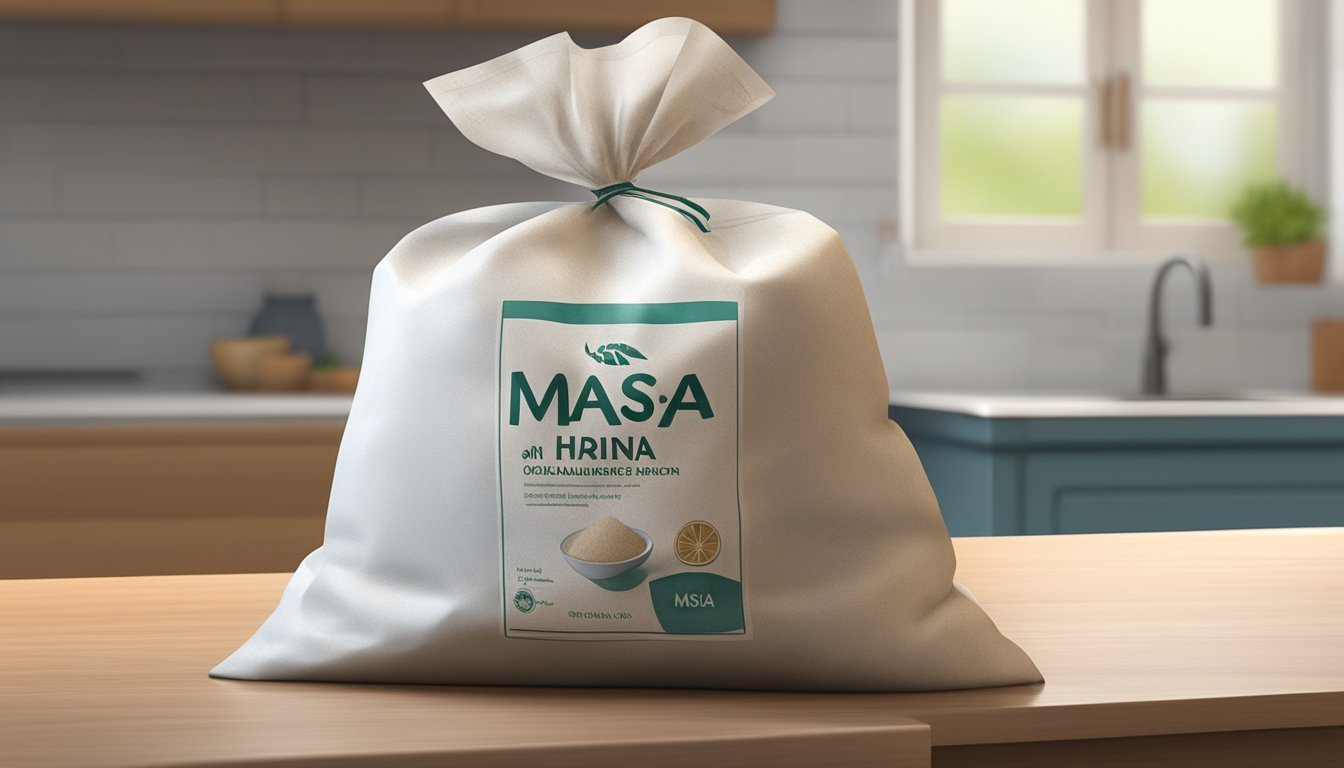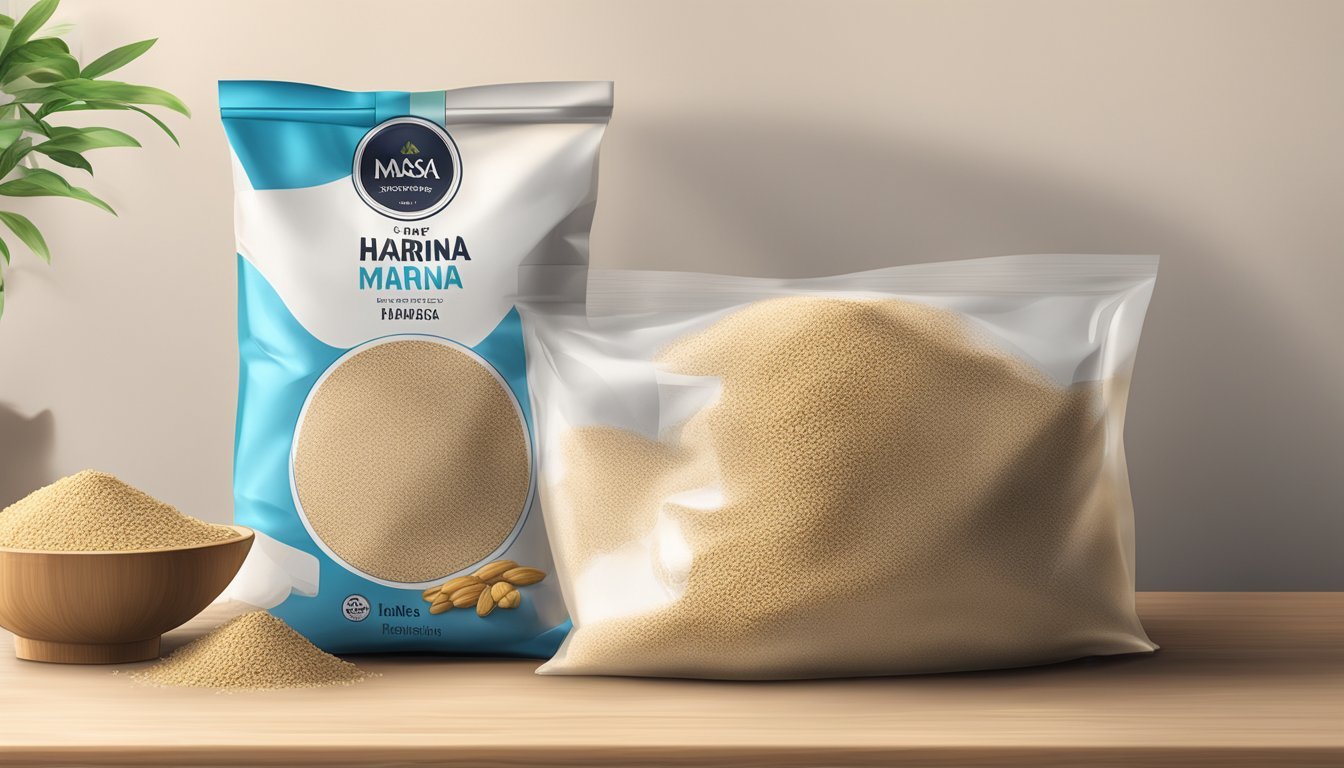Does Masa Harina Go Bad?
Shelf Life and Storage Tips
Masa harina, a staple in Mexican and Latin American cuisine, is a finely ground corn flour used to make traditional dishes such as tortillas, tamales, and gorditas. For those who enjoy the authentic taste and texture of homemade Mexican corn-based foods, understanding the shelf life of masa harina is essential. It's important to know how long this essential ingredient can be stored and remain effective in your recipes.
Masa harina does not spoil in the traditional sense but over time it can lose its flavor and effectiveness. When stored properly in an airtight container in a cool, dark place, masa harina can maintain its quality for about 9 to 12 months. Factors like light exposure, temperature fluctuations, and packaging integrity can impact its shelf life.
Fresh masa, or masa preparada, on the other hand, has a much shorter lifespan and should be used within a few days when stored in the refrigerator. Freezing fresh masa can extend its life to several months, ensuring that the desired taste and texture remain intact for future culinary adventures. Understanding these storage techniques can help avid cooks maintain the quality of their masa harina and enjoy the rich, traditional flavors they seek.
Understanding Masa Harina
Masa harina, a traditional staple in Latin American cuisine, is the refined product of corn processing and nixtamalization. It plays a crucial role in making tortillas, tamales, and other beloved dishes. Understanding its origins, production, and types will help in appreciating its significance.
Origins and Cultural Significance
Masa harina originated in Mexico and has deep cultural roots in various Latin American countries. It is essential for traditional dishes like tortillas, tamales, gorditas, and pupusas. This uniquely processed flour supports the culinary identity of many regions. Masa harina's use dates back to ancient civilizations, highlighting its historical importance and enduring legacy.
Production Process
The production of masa harina involves nixtamalization, where corn is soaked and cooked in an alkaline solution, often calcium hydroxide. This process improves nutritional content and imparts a distinct flavor. Once treated, the corn is dried and ground into flour. This specialized treatment sets masa harina apart from regular wheat flour and is crucial for proper texture and taste.
Types of Masa Harina
Masa harina comes in various types, each suited for specific culinary applications. White masa harina is the most common and versatile, used for tortillas and tamales. Yellow masa harina, derived from yellow corn, offers a slightly sweeter taste. Blue masa harina is made from blue corn and boasts a nutty flavor. Each type brings unique qualities to the dishes they help create, enriching the diversity of Latin American cuisine.
Shelf Life Considerations
When it comes to masa harina, proper storage and awareness of degradation factors are crucial to ensure its longevity and quality. Here are some key points to consider regarding its shelf life.
Factors Influencing Shelf Life
Several elements affect the shelf life of masa harina. Moisture is perhaps the most significant, as exposure can lead to mold growth and spoilage. Storing masa harina in an airtight container in a cool, dry place helps mitigate these risks.
Heat is another detrimental factor, accelerating the breakdown of fats in the flour and causing rancidity. Airtight storage reduces air exposure, preserving freshness. Monitoring the expiration date on the packaging is important, but knowing environmental factors provides an extra layer of assurance.
Average Shelf Life
Masa harina typically remains good for about 6 to 12 months when stored properly. An airtight container helps protect it from harmful elements. A cool and dry environment is key, as heat and moisture drastically shorten its usable period.
For those using fresh masa dough, the shelf life is shorter, usually 3 to 4 days in the refrigerator. Freezing extends its lifespan to up to 6 months. Proper wrapping before freezing can prevent freezer burn and quality loss.
Proper Storage Methods
Proper storage of masa harina ensures longevity and maintains its quality. Various methods include storing it in the pantry, refrigeration and freezing, and using airtight containers or vacuum-sealed bags.
Storing in the Pantry
Storing masa harina in the pantry is suitable for short-term use. Keep it in a cool, dry place away from direct sunlight to prevent moisture absorption and loss of freshness. Placing it in a dark cupboard or pantry helps maintain its quality.
Use airtight containers to keep out air and moisture. Tupperware containers or jars with tightly sealed lids are ideal options. Make sure to label the containers with purchase dates to monitor freshness.
Refrigeration and Freezing
For longer shelf life, refrigeration or freezing is recommended. In the refrigerator, masa dough can last 3-4 days if stored in an airtight container or wrapped with plastic wrap.
Freezing is effective for longer storage. Wrap the masa dough with saran wrap, then place it in a freezer-safe bag. Properly sealed and frozen masa dough can last up to 3-6 months without losing its quality.
Airtight Containers and Packaging
Utilizing airtight containers or vacuum-sealed bags is crucial for preserving masa harina. These methods prevent exposure to air, moisture, and contaminants, extending shelf life.
Choose containers with secure lids or use vacuum-sealed bags for optimal storage. Ensure the containers are stored in a cool, dry place. Using airtight packaging is especially vital when refrigerating or freezing to maintain freshness and prevent freezer burn.
Identifying Spoilage
Properly identifying when masa harina has gone bad is crucial to ensure safe consumption and maintain quality. Key indicators of spoilage include changes in smell, appearance, and the presence of pests or mold.
Signs of Spoilage
Odor: One of the first signs that masa harina is no longer fresh is a rancid or unusual smell. Fresh masa harina has little to no odor, so any off smell typically indicates spoilage.
Discoloration: Check the color of the masa harina. Fresh masa harina is usually a consistent, off-white color. Any dark spots or discoloration may be a sign of mold or contamination.
Texture: Fresh masa harina has a fine, consistent texture. If it feels unusually clumpy, sticky, or has hardened, it indicates moisture exposure, which can lead to spoilage.
Mold Growth: Any visible mold growth is a definite sign that the masa harina should be discarded. Mold can appear as blue, green, or white fuzzy spots.
Presence of Pests: Look for any signs of insects or pests. Tiny holes in the packaging, webbing, or the presence of bugs themselves signal that the product is compromised and should not be used.
Health Risks of Spoiled Masa Harina
Consuming spoiled masa harina can pose several health risks.
Food Poisoning: Spoiled masa harina contaminated with mold or pests can cause food poisoning, leading to symptoms such as nausea, vomiting, and diarrhea.
Allergic Reactions: Mold growth on masa harina can trigger allergic reactions in some individuals. Symptoms may include respiratory irritation, sneezing, or skin rashes.
Nutritional Loss: Spoiled masa harina loses its nutritional value, impacting the overall quality of the dishes prepared using it. Consuming nutritionally compromised food can have adverse effects on health over time.
Toxin Exposure: Some molds produce mycotoxins, which can be harmful if ingested. Long-term exposure to these toxins can lead to serious health issues, including liver damage and immune suppression.
Regularly inspecting masa harina for these signs and storing it in a cool, dry place will help maintain its quality and safety for consumption.
Prevention of Deterioration
Proper storage techniques ensure that masa harina remains fresh and free from contamination. Key strategies include minimizing moisture and air exposure, protecting against pests, and understanding the defrosting process.
Protecting Against Pests and Contamination
Masa harina should be stored in airtight containers to shield it from pests and bacteria. Pantry moths and weevils are common pests that can infest masa harina, making it unfit for consumption. Plastic containers and glass jars with tight seals are effective in keeping pests out.
For added protection, some people prefer to store masa harina in the refrigerator or freezer. Refrigeration slows down bacterial growth, while freezing extends shelf life. Ensure the masa is wrapped securely in plastic wrap or a freezer-safe bag before freezing. This double-layer protection helps prevent contamination and freezer burn.
Mitigating Factors That Cause Spoilage
Moisture and air exposure are significant factors affecting the shelf life of masa harina. To reduce moisture, store masa harina in a cool, dry place away from humidity sources like sinks or stoves. Excessive moisture introduces the risk of mold growth and spoilage.
It's essential to reseal bags tightly after each use. Vacuum-sealing equipment can remove air from storage bags, which helps maintain freshness. Additionally, avoiding the purchase of large quantities unless it can be used in a short time frame helps in managing spoilage. Always label and date the masa harina before storing, so it is easier to track its age and usage.
Culinary Uses of Masa Harina
Masa harina is a versatile ingredient in various dishes, known for its unique flavor and texture. It is pivotal in traditional Latin American cuisine, particularly for items like tortillas, tamales, and more.
From Dough to Traditional Dishes
Masa harina, when mixed with water, forms masa, a dough essential for making corn tortillas, which are a staple in countless dishes. Tamales, made by steaming masa filled with meats, cheeses, or chili, showcase its versatility.
Gorditas and pupusas are other traditional uses, involving thicker dough portions stuffed with various fillings and then grilled or fried. The masa dough is also integral in making homemade nachos and tostadas, providing a solid base with a distinct corn flavor.
Comparing Masa Harina with Other Flours
Unlike wheat flour, masa harina is made from nixtamalized corn, giving it a unique flavor profile and allowing it to bind differently. This feature makes it suitable for dishes like cornbread, where a distinctive taste is desired.
In terms of quality of ingredients, masa harina may often be more naturally preserved, lacking many preservatives found in other flours. This impacts the overall culinary experience, emphasizing freshness and a straightforward corn taste that elevates traditional recipes.
Maximizing Freshness and Quality
To maintain the flavor and nutritional value of masa harina, specific storage conditions are crucial. Proper storage can prevent spoilage and enhance its use in Latin American cuisine.
Best Practices for Maintaining Quality
Store in a Cool, Dry Place: Masa harina should be kept away from moisture. A pantry or a kitchen cabinet is ideal, as long as the location is cool and dry. Optimal Temperature: 60-70°F.
Airtight Containers: Use airtight containers to prevent exposure to air and moisture. Vacuum-sealed bags can also extend shelf life.
Refrigeration and Freezing: For long-term storage, masa harina and dough can be refrigerated or frozen. Refrigeration: Use within 3-4 days. Freezing: Masa dough can last up to 6 months.
Check for Freshness: Regularly check for signs of spoilage, such as a rancid smell or unusual texture. Visual Inspections: Look for mold or pests.
Proper storage ensures masa harina retains its quality, enhancing the final dishes' flavor and nutritional value.







